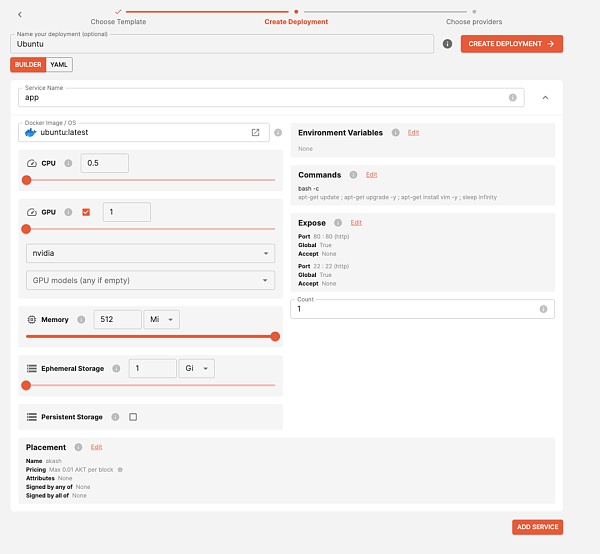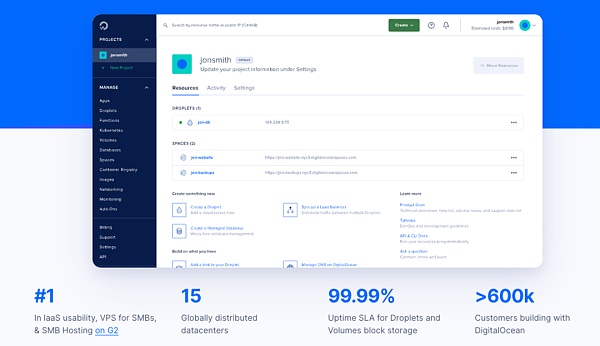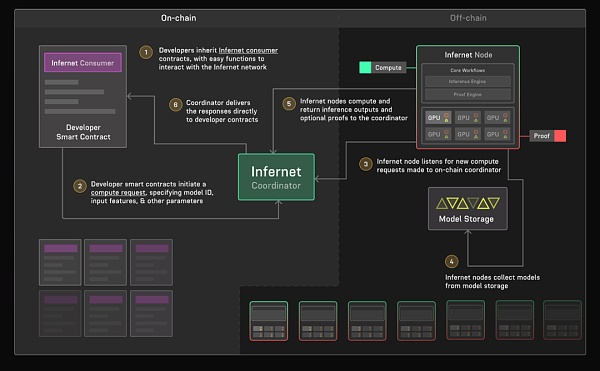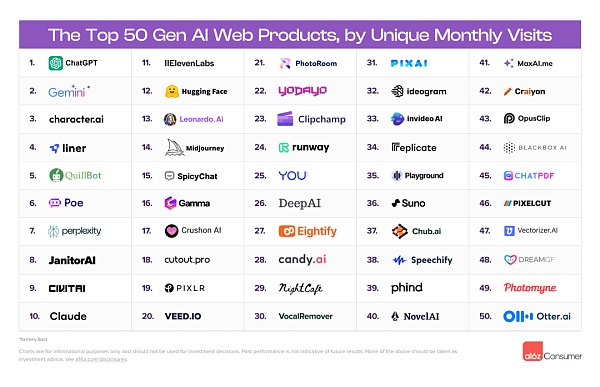IOSG|Where is the way out for homogenized AI infrastructure?
This study aims to explore which AI areas are most important to developers and which may be the next opportunities to explode in the field of Web3 and AI.
 JinseFinance
JinseFinanceForeword

The recent rapid development of large language models (LLMs) has triggered interest in using artificial intelligence (AI) to transform various industries. interest of. The blockchain industry is not immune, and the emergence of theAI x Crypto narrative has brought it into the spotlight. This article explores three main ways to merge AI and crypto and explores the unique opportunities of blockchain technology to solve problems in the AI industry.
AIxCrypto's three approaches include:
1. Integrate AI into existing products: Companies like Dune are using AI to enhance their products, such as introducing SQL copilot to help users write complex queries.
2. Building AI infrastructure for the crypto ecosystem: Startups such as Ritual and Autonolas focus on developing AI-driven infrastructure , tailored specifically for the needs of the crypto ecosystem.
3. Use blockchain to solve AI industry problems: Projects such as Gensyn, EZKL and io.net are exploring blockchain technology How to solve challenges facing the AI industry, such as data privacy, security and transparency.
The uniqueness of AI x Crypto is that blockchain technology is expected to solve the inherent problems of the AI industry . This unique intersection opens up new possibilities for innovative solutions that benefit the AI and blockchain communities.
In delving into the field of AI x Crypto, we aim to identify and showcase the most promising applications of blockchain technology in solving AI industry challenges. By partnering with AI industry experts and crypto builders, we are committed to promoting the development of cutting-edge solutions that leverage the strengths of both technologies.

1. Industry Overview
The AI x Crypto field can be divided into two categories: infrastructure and applications strong>. While some existing infrastructure continues to support AI use cases, new players are launching entirely new AI-native architectures in the market.
1. 1 Computing Network
In the field of AIxCrypto, Computing networks play a vital role in providing the infrastructure required for AI applications. These networks can be divided into two types based on the tasks they support: general-purpose computing networks and specialized computing networks.
1.1.1 Universal Computing Network
General Computing Network (such as IO.net and Akash) provide users with the opportunity to access the machine via SSH and provide a command line interface (CLI) that enables users to build their own applications. These networks are similar to virtual private servers (VPS), providing a personal computing environment in the cloud.
IO.net Based on the Solana ecosystem, it focuses on GPU leasing and computing clusters, while Akash, based on the Cosmos ecosystem, mainly provides CPU cloud servers and various applications. template.

IOSG Ventures’ view:
Compared with the mature Web2 cloud market, computing network Still in the early stages. Web3 computing networks fall short of the "Lego" building blocks of Web2, such as serverless functions, VPS and database cloud projects based on major cloud providers such as AWS, Azure and Google Cloud.
Advantages of computing networks include:
Blockchain technology can utilize unused computing resources and personal computers to make the network more sustainable.
Peer-to-peer (P2P) design allows individuals to monetize unused computing resources and provide lower-cost computing, thereby potentially Reduce costs by 75%-90%.
However, due to the following challenges, it is difficult for computing networks to be put into actual production and replace Web2 cloud services:
Pricing is certainly the main advantage of general computing networks, but it must be compared with mature Web2 cloud companies Competing on features, security and stability remains challenging.
The peer-to-peer style may limit the ability of these networks to quickly deliver mature and robust products. The decentralized nature will increase development and maintenance costs.

1.1.2 Private Computing Network
Private Compute networking adds an extra layer to the general computing network, allowing users to deploy specific applications through configuration files. These networks are designed to meet specific use cases, such as 3D rendering or AI inference and training.
Render is a professional computing network focusing on 3D rendering. In the field of AI, new players like Bittensor, Hyperbolic, Ritual and fetch.ai focus on AI inference, while Flock and Gensyn mainly focus on AI training.

IOSG Ventures’ view:
Private computing networks Advantages:
Decentralization and crypto features solve the common problems of centralization and cryptography in the AI industry Transparency issues.
Permissionless computing network and verification scheme ensure the effectiveness of the inference and training process.
Privacy-preserving technologies, such as federated learning adopted by Flock, allow individuals to contribute data to model training while keeping their data local and Private.
By supporting the integration of smart contracts with downstream blockchain applications, AI reasoning can be used directly on the blockchain.

Source: IOSG Ventures
Although Dedicated AI inference and training computing networks are still in the early stages, but we expect Web3 AI applications to prioritize Web3 AI infrastructure. This trend is already evident in collaborations such as Story Protocol and Ritual’s partnership with MyShell to introduce AI models as intellectual property.
Although killer applications built on these emerging AI x Web3 infrastructure have yet to emerge, the potential for growth is huge. As the ecosystem matures, we expect to see more innovative applications that leverage the unique capabilities of decentralized AI computing networks.

2. Data
Data plays a vital role in the AI model, and the development of the AI model Data is involved at all stages, including data collection, training dataset storage, and model storage.
2.1 Data Storage
Decentralized storage of AI models is critical to providing inference APIs in a decentralized manner. Inference nodes should be able to retrieve these models from anywhere at any time. With AI models potentially reaching hundreds of gigabytes in size, a robust decentralized storage network is needed. Leaders in decentralized storage, such as Filecoin and Arweave, may be able to provide this functionality.
IOSG Ventures’ view:
There are huge opportunities in this area.
A decentralized data storage network optimized for AI models, providing version control and different storage Low-precision model quantization and fast downloading of large models.
Decentralized vector databases, as they are often bundled with models, provide more accuracy by inserting necessary problem-related knowledge s answer. Existing SQL databases can also be added with vector search support.
2.2 Data collectionCollection and tagging
Collecting high-quality data is crucial for AI training. Blockchain-based projects such as Grass use crowdsourcing to collect data for AI training, leveraging personal networks. With appropriate incentives and mechanisms, AI trainers can obtain high-quality data at a lower cost. Projects such as Tai-da and Saipen focus on data labeling.
IOSG Ventures’ view:
Some of our observations on this market:
Most data tagging projects are affected by GameFi Inspired by, attracting users with the "tag earn" concept and developers with the promise of lowering costs for high-quality tagged data.
There is currently no clear leader in this field, and Scale AI dominates the Web2 data labeling market.
2.3 Blockchain data
When training AI models specifically for blockchain, developers need high-quality blockchain data that can be used directly in their training process. Spice AI and Space and Time provide high-quality blockchain data with SDKs, allowing developers to easily integrate the data into their training data pipelines.
IOSG Ventures’ view:
As the demand for blockchain-related AI models grows, the demand for high-quality blockchain data will surge. However, most data analysis tools currently only provide data export in CSV format, which is not ideal for AI training purposes.
To promote the development of AI models specifically for blockchain, it is crucial to provide more blockchain-related machine learning operations ( MLOP) functionality to improve developer experience. These features should enable developers to seamlessly integrate blockchain data directly into their Python-based AI training pipelines.

3. ZKML
Due to the incentive to use less complex models to reduce computational costs, centralized AI providers face trust issues. For example, users sometimes felt that ChatGPT was underperforming last year. This was later attributed to an OpenAI update aimed at improving model performance.
In addition, content creators have raised copyright concerns about AI companies. It is difficult for these companies to prove that specific data was not included in their training process.
Zero-knowledge machine learning (ZKML) is an innovative approach that solves the trust issues associated with centralized artificial intelligence providers. By leveraging zero-knowledge proofs, ZKML enables developers to prove the correctness of their AI training and inference processes without revealing sensitive data or model details.
3.1 Training
Developers can use zero-knowledge virtual Execute training tasks in a machine (ZKVM), such as the virtual machine provided by Risc Zero. This process generates a proof that verifies that training was performed correctly and only authorized data was used. This certification serves as evidence that the developer adhered to appropriate training specifications and data usage permissions.
IOSG Ventures’ view:
ZKML provides a unique solution for proving authorized data use in model training, which is often difficult to achieve given the black-box nature of artificial intelligence models.
This technology is still in its early stages. The computational overhead is huge. The community is actively exploring more use cases for ZK training.
3.2 Reasoning
ZKML takes significantly longer to infer than its training counterpart. There are already several well-known companies emerging in this space, each with a unique approach to making machine learning inference trustless and transparent.
Giza is focused on building a comprehensive machine learning operations (MLOP) platform and building a vibrant community around it. Their goal is to provide developers with tools and resources to integrate ZKML into inference workflows.
EZKL, on the other hand, prioritizes the development experience by creating a user-friendly ZKML framework that provides good performance. Their solution aims to simplify the process of implementing ZKML inference, making it easily accessible to more developers.
Modulus Labs takes a different approach and has developed its own proof system. Their main goal is to significantly reduce the computational overhead associated with ZKML inference. By reducing the overhead by a factor of 10, Modulus Labs attempts to make ZKML inference more practical and efficient for real-world applications.
IOSG Ventures’ view:
ZKML is particularly suitable for GameFi and DeFi scenarios where the lack of trust is crucial.
The computational overhead introduced by ZKML makes it difficult to run large artificial intelligence models efficiently.
The industry is still looking for DeFi and GameFi pioneers to heavily use ZKML in their products to demonstrate its practical application scenarios.

4. Agent network + other applications
4.1 Agent network strong>
The agent network consists of numerous artificial intelligence agents equipped with the tools and knowledge to perform specific tasks, such as assisting in on-chain transactions. These agents can collaborate with each other to achieve more complex goals. Several well-known companies are actively developing chatbot-like agents and agent networks.
Sleepless, Siya, Myshell, characterX and Delysium are important players that are building chatbot agents. Autonolas and ChainML are building proxy networks for more powerful use cases.
IOSG Ventures’ view:
Agents are crucial for real-world applications. They can perform specific tasks better than general artificial intelligence. Blockchain offers several unique opportunities for artificial intelligence agents.
Has an incentive mechanism: Blockchain uses non-fungible tokens (NFTs) and other technologies provide incentive mechanisms. With clear ownership and incentive structures, creators are incentivized to develop more interesting and innovative agents on-chain.
Composability of smart contracts: Smart contracts on the blockchain are highly composable and operate like Lego blocks. The open API provided by smart contracts enables agents to perform complex tasks that are difficult to achieve in traditional financial systems. This composability enables agents to interact with and leverage the functionality of a variety of decentralized applications (dApps).
Inherent openness: By building proxies on blockchains, they inherit the inherent openness and transparency of these networks . This creates significant opportunities for composability between different agents, allowing them to cooperate and combine their capabilities to solve more complex tasks.
4.2 Other applications
In addition to the major categories discussed previously, there are several interesting AI applications that are receiving attention in the Web3 space, although they may not be large enough to form independent categories. These applications span a variety of fields and demonstrate the diversity and potential of artificial intelligence in the blockchain ecosystem.
Image generation: ImgnAI
Image prompt monetization: NFPrompt
Community-trained artificial intelligence image generation: Botto
Chatbots: Kaito, Supersight, Galaxy, Knn3, Awesome QA, Qna3
Finance: Numer AI
Wallet: Dawn_wallet
Game: Parallel TCG
Education: Hooked
Security: Forta
DID: Worldcoin
Creator Tools: Plai Lab

5. Promote AIxCrypto Empowering Web2 users to achieve mass adoption
AI x Crypto is unique because it solves the most difficult problems in artificial intelligence question. Despite the gap between the current AIxCrypto product and the Web2 AI product and its lack of appeal to Web2 users, AIxCrypto still has some unique features that only AIxCrypto can offer.
5.1 Cost-effective computing resources:
One of the main advantages of AIxCrypto is to provide cost-effective computing resources. As the demand for LLM increases and there are more developers in the market, GPU availability and pricing become more challenging. GPU prices have increased significantly, and there are shortages.
Decentralized computing networks such as the DePIN project can help alleviate this problem by leveraging idle computing power, GPUs in small data centers, and personal computing devices. Although decentralized computing power may not be as stable as centralized cloud services, these networks provide cost-effective computing equipment in a variety of geographies. This decentralized approach minimizes edge latency, ensuring a more distributed and resilient infrastructure.
By leveraging the power of decentralized computing networks, AIxCrypto can provide Web2 users with affordable and accessible computing resources. This cost advantage will be attractive in attracting Web2 users to adopt AIxCrypto solutions, especially as the demand for AI computing continues to grow.
5.2 Give creators ownership:
AI x Another important advantage of Crypto is the protection of creators’ proprietary rights. In the current field of artificial intelligence, some agents are easily copied. These agents can be easily replicated by simply writing similar prompts. Additionally, proxies in GPT stores are often owned by centralized companies rather than creators, limiting creators’ control over their works and their ability to monetize effectively.
AI x Crypto solves this problem by leveraging proven NFT technology ubiquitous in the crypto space. By representing agency as NFTs, creators can truly own their creations and receive real benefits from them. Every time a user interacts with an agent, creators can earn incentives, ensuring a fair reward for their efforts. The concept of NFT-based ownership applies not only to agents, but can also be used to protect other important assets in the field of artificial intelligence, such as knowledge bases and tips.
5.3 Protect privacy and rebuild trust:
Users and creators have privacy concerns about centralized AI companies. Users worry about their data being misused to train future models, while creators worry about their work being used without proper attribution or compensation. Additionally, centralized AI companies may sacrifice service quality to reduce infrastructure costs.
These problems are difficult to solve with Web2 technology, and AIxCrypto leverages advanced Web3 solutions. Zero-knowledge training and inference provide transparency by proving the data used and ensuring the correct model is applied. Technologies such as Trusted Execution Environment (TEE), federated learning, and fully homomorphic encryption (FHE) enable secure, privacy-preserving AI training and inference.
By prioritizing privacy and transparency, AIxCrypto enables AI companies to regain public trust and provide AI services that respect user rights, setting them apart from traditional Web2 solution.
5.3 Protect privacy and rebuild trust:
Users and creators have privacy concerns about centralized AI companies. Users worry about their data being misused to train future models, while creators worry about their work being used without proper attribution or compensation. Additionally, centralized AI companies may sacrifice service quality to reduce infrastructure costs.
These problems are difficult to solve with Web2 technology, and AIxCrypto leverages advanced Web3 solutions. Zero-knowledge training and inference provide transparency by proving the data used and ensuring the correct model is applied. Technologies such as Trusted Execution Environment (TEE), federated learning, and fully homomorphic encryption (FHE) enable secure, privacy-preserving AI training and inference.
By prioritizing privacy and transparency, AIxCrypto enables AI companies to regain public trust and provide AI services that respect user rights, setting them apart from traditional Web2 solution.
5.4 Tracking content sources
With manual As intelligently generated content becomes increasingly sophisticated, it becomes more difficult to differentiate between human-authored and AI-generated text, images or videos. To prevent misuse of AI-generated content, people need a reliable way to determine the source of the content.
Blockchain is great at tracking the provenance of content, just as it has been successfully used in supply chain management and NFTs. In the supply chain industry, blockchain tracks the entire life cycle of a product, and users can identify the manufacturer and key milestones. Likewise, blockchain tracks creators and, in the case of NFTs, prevents piracy, which are particularly susceptible to piracy due to their public nature. Despite this vulnerability, utilizing blockchain can minimize losses from fake NFTs, as users can easily differentiate between real and fake tokens.
By applying blockchain technology to track the origin of AI-generated content, AIxCrypto provides users with the ability to verify whether content creators are AI or human, thereby reducing potential for abuse and increase trust in the authenticity of the content.
5.5 Developing models using cryptocurrencies
Design And training models, especially large models, is an expensive and time-consuming process. There is also uncertainty surrounding the new model, and developers cannot predict its performance.
Cryptocurrencies provide a developer-friendly way to collect pre-training data, collect reinforcement learning feedback, and fundraise from interested parties. The process is similar to the life cycle of a typical cryptocurrency project: raise funding through private investment or a launch pad, and release tokens to active contributors upon launch.
Models can adopt a similar approach, raising funds for training by selling tokens and airdropping tokens to contributors of data and feedback. With a well-designed token economic model, this workflow helps individual developers train new models more easily than ever before.

6. Challenges of Tokennomics
AI x Crypto The project began to target Web2 developers as potential customers because encryption has unique value proposition, and the market size of the Web2 artificial intelligence industry is considerable. However, tokens can be a roadblock for Web2 developers who are unfamiliar with tokens and reluctant to get involved in token-based systems.
In order to cater to Web2 developers, reducing or removing the utility of tokens may cause confusion for Web3 enthusiasts because it may change the AI x Crypto project fundamental position. When working to integrate valuable tokens into AI SaaS platforms, finding the balance between attracting Web2 developers and maintaining the utility of the token is a challenging task.
To bridge the gap between Web2 and Web3 business models while maintaining token value, there are several potential approaches that could be considered:
Leverage tokens within the project’s distributed infrastructure network. Implement staking, reward and penalty mechanisms to protect the underlying network.
Use tokens as a payment method and provide an entrance for Web2 users
Share revenue with token holders
Use proceeds to repurchase or destroy tokens
Services provided to the project, offering discounts and additional features to token holders
Through careful attention to Designing a token economic model that aligns with the interests of Web2 and Web3, the AI x Crypto project can successfully attract Web2 developers while maintaining the value and utility of its token.

7. Our Favorite AI x Crypto Scenario
Our Favorite The AIxCrypto scenario leverages the power of user collaboration to complete tasks in the field of artificial intelligence with the help of blockchain technology. Some specific examples include:
1. Collective data contribution for AI training, alignment and benchmarking (such as Chatbot Arena)
2. Collaborate to build a large shared knowledge base that can be used by various agents (e.g., Sahara)
3. Exploit Personal resources for web scraping (e.g., Grass)
These models demonstrate decentralization by leveraging the collective efforts of users based on blockchain incentives and coordination The potential of a centralized, community-driven approach to AI development and deployment.

Conclusion
We are at the dawn of AI and Web3, and compared to other industries, AI is Integration in the blockchain space is still in its early stages. Among the top 50 Gen AI products, there are no products related to Web3. The top LLM tools are related to content creation and editing, mainly targeting sales, meetings, and notes/knowledge bases. Considering the large amount of research, documentation, sales and community efforts in the Web3 ecosystem, there is huge potential for the development of custom LLM tools.

Currently, developers are focusing on building infrastructure to bring advanced AI models to the chain, although we have not yet reached the goal. As we continue to develop this infrastructure, we are also exploring the best user scenarios for conducting AI inference on-chain in a secure and trustless manner, which provides unique opportunities in the blockchain space. Other industries can directly use existing LLM infrastructure for inference and fine-tuning. Only the blockchain industry needs its own native AI infrastructure.
In the near future, we expect that blockchain technology will leverage its peer-to-peer advantages to solve the most challenging problems in the artificial intelligence industry, enabling AI models to More affordable, accessible and profitable for everyone. We also expect the crypto space to follow the AI industry narrative, albeit with a slight delay. Over the past year, we have seen developers combine Crypto, proxy and LLM models. In the coming months, we may see more multi-modal models, text video generation, and 3D generation impact the crypto space.
The entire AI and Web3 industry has not received sufficient attention at present. We are eagerly looking forward to the detonating moment of AI in Web3, a killer application of CryptoxAI.
This study aims to explore which AI areas are most important to developers and which may be the next opportunities to explode in the field of Web3 and AI.
 JinseFinance
JinseFinanceUSDT, stablecoin, IOSG | Usual Money's new stablecoin gold standard Golden Finance, Usual is ready to challenge Tether.
 JinseFinance
JinseFinanceThe AI x Web3 fusion brings a promising future filled with innovation and potential. By leveraging the unique strengths of each technology, we can solve a variety of challenges and open up new technological paths.
 JinseFinance
JinseFinanceDuring this period when there are not many incremental users, there is already an ecosystem that has maintained a very high user base and growth.
 JinseFinance
JinseFinanceFully homomorphic encryption (FHE) is a class of cryptographic schemes that allows computations to be performed on encrypted data (ciphertext) without decrypting the data, opening up a range of use cases for privacy and data protection.
 JinseFinance
JinseFinanceBitVM, Layer 2, BTC, IOSG | BitVM: The dawn of Bitcoin programmability Golden Finance, the rapid expansion of Bitcoin expansion solutions
 JinseFinance
JinseFinanceAIGC, IOSG|GPU supply crisis: The road to disruption for AI startups Golden Finance, as the supply of new GPUs tightens, where does blockchain play a role?
 JinseFinance
JinseFinance2023 is a year to be proud of and move forward boldly for IOSG Ventures.
 JinseFinance
JinseFinanceAs cryptocurrency market caps grow and more people have disposable capital on-chain, the prediction markets industry could be profitable, or at least useful.
 JinseFinance
JinseFinance像《黑暗森林》这样的全链游戏已经证明,你可以把游戏逻辑都放在链上,且由于其具有无许可的互操作性,鼓励了社区创造新工具、联盟和 DAO 等等。
 Others
Others